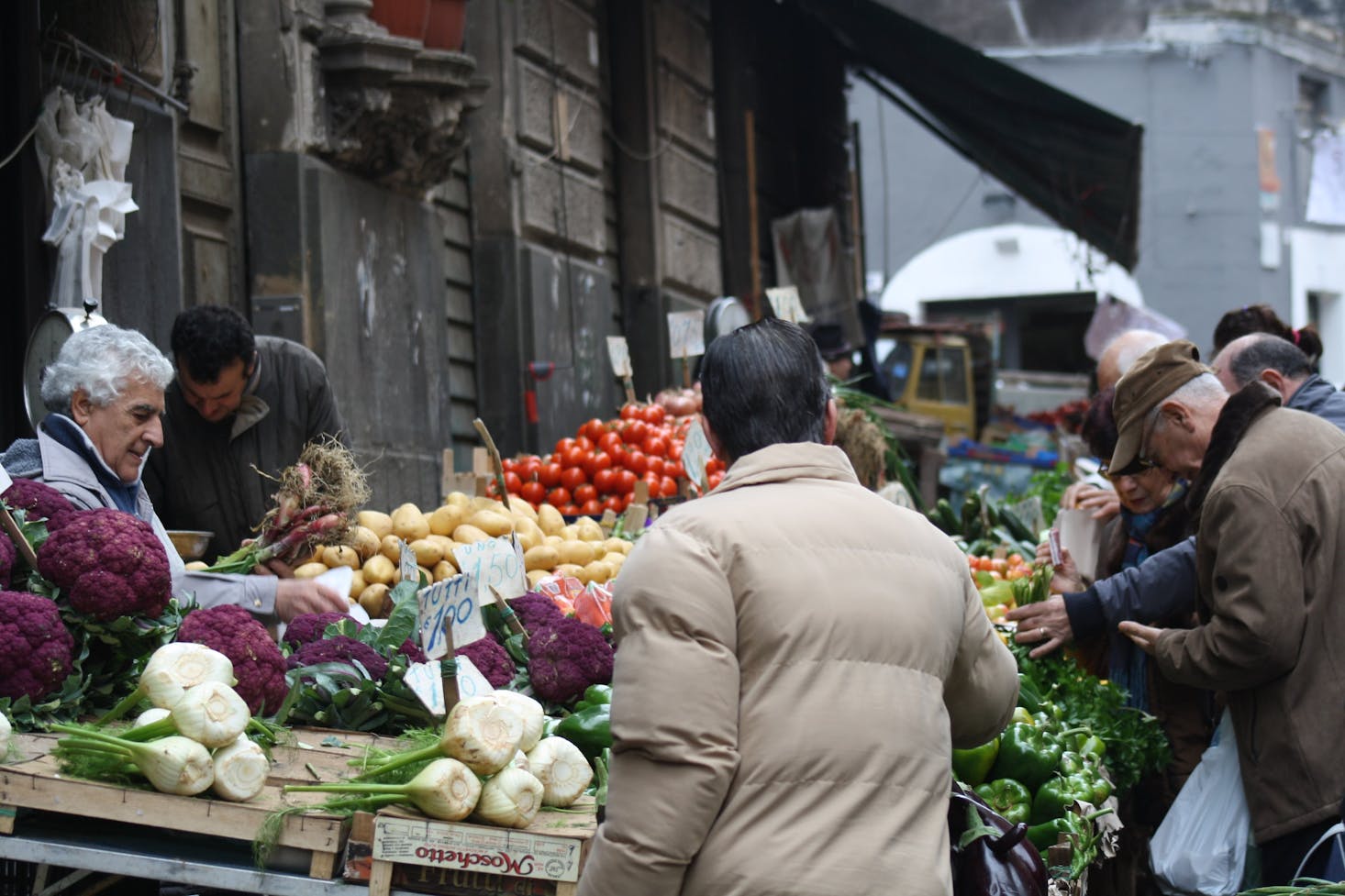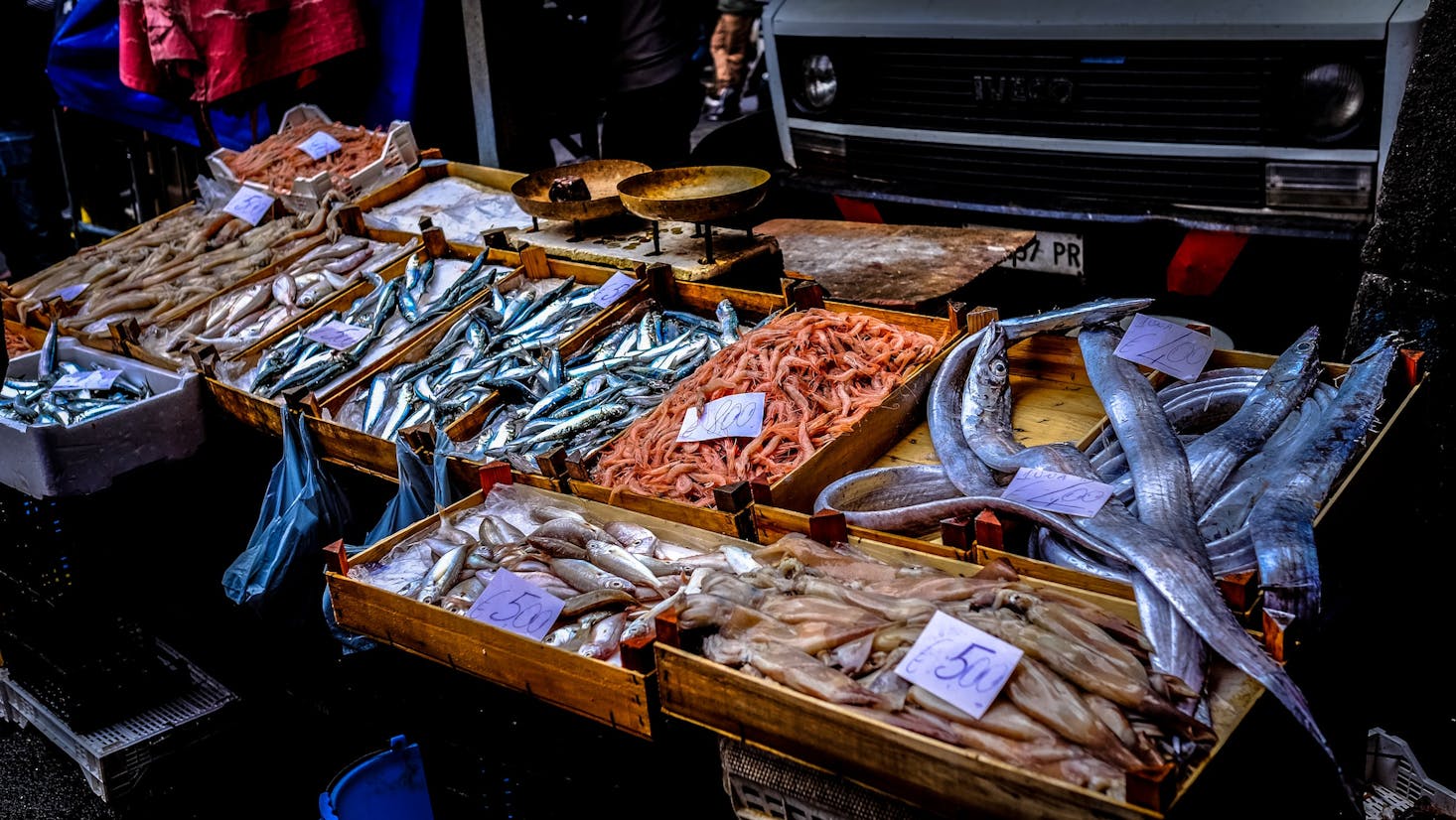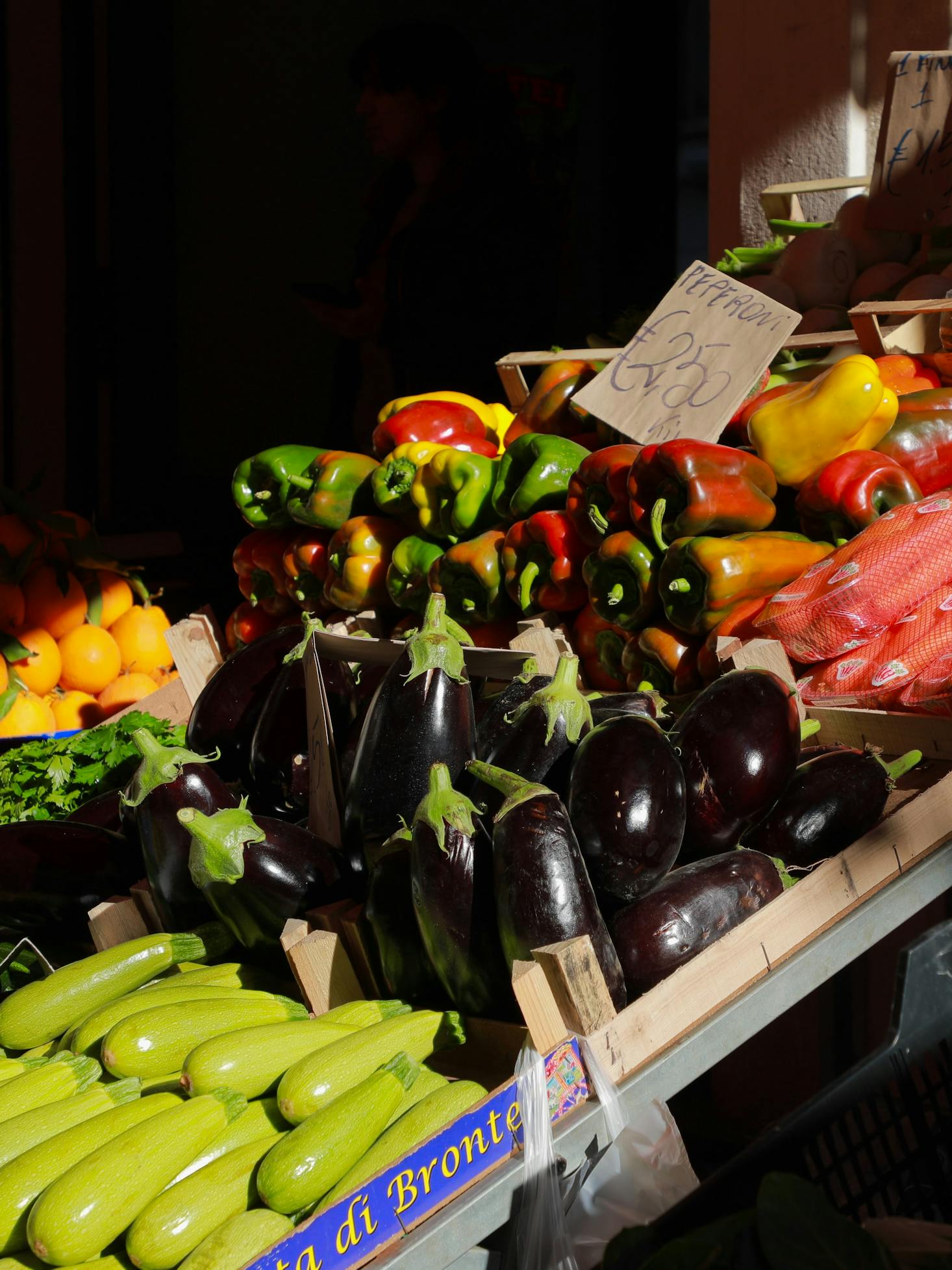What to Eat in Catania: 10 Treats You Should Not Miss

Catania is a picturesque city with a landscape dominated by the majestic Mount Etna, the highest active volcano in Europe, home to fertile farms and vineyards. The city is currently an important political, economic, artistic, and cultural center of Sicily and has been since the Renaissance. But besides its fascinating history and beautiful sites, Catanese cuisine is also the envy of the Mediterranean.
You can’t leave the city without trying the best street food in Catania, including arancini, which is available in nearly all cafes. It’s also a feast to the senses as you walk in the food and fish market, where you’ll find different food varieties, from grilled and roasted meat to pastries filled with all the goodness like ham, chicken, eggs, and cheese. Donkey and horse meats are among the typical street delights if you want to try something new. But even the vegetarian restaurants in Catania offer pleasant surprises that will complete your culinary experience.
When it comes to desserts, this Sicilian city has some of the best sweets like Bersaglieri and Biscotti della Monaca. These are only some of the best traditional cookies and real gems encapsulating the goodness of Catanese sweets.
If you plan to visit Sicily’s second-largest city, either for work or leisure, use this guide, so you don’t have to wonder what to eat in Catania. Explore the fish market and old restaurants for delicious dishes and local delicacies. Although you can try any Sicilian cuisine outside the Italian region, it’s still worth tasting traditional dishes and enjoying authentic flavors. After leaving your bags with Bounce luggage storage in Catania, you can now begin your food tour without burden.
Get $5 off with the Bounce app
Use Bounce to find nearby bag storage in 4,000+ cities worldwide.
Get the app

Catania Food: Pasta alla Norma
If there’s an epic dish you shouldn’t miss in Catania, it would be Pasta alla Norma. A classic Sicilian food, Pasta alla Norma has two fundamental ingredients: eggplant and basil. Cook the eggplant cubes until lightly brown and toss them into a tomato sauce with pasta. Finish with ricotta salata cheese and sprinkle with basil for some herby freshness. You can use any pasta shape you like. But many prefer the thicker tubular-shaped ones, like rigatoni or calamarata, as their hollow centers provide space for the rich and creamy sauce.
Now, who’s Norma? The lore of the pasta's origin goes back to a 19-century Italian opera composer, Vincenzo Bellini. After tasting the pasta, the playwright Nino Martoglio exclaimed, “ Chista è 'na vera Norma!” meaning “This is a true Norma.” Since then, it has been called Pasta alla Norma as a tribute to Bellini’s opera Norma. To learn more about Bellini, visit a Catania museum. There is one dedicated to Bellini, as listed in our museum guide.
Catania Food: Cartocciata
Although grilled meat is the most typical street food in Catania, the Cartocciata is a favorite street food snack you can carry around while exploring the city. It is a tasty pastry filled with all the goodness like ham, mozzarella cheese, olives, or aubergine. You’ll likely find it in most street food stands, cafes, bakeries, food markets, and even bars (see our list of rooftop bars in Catania). It’s simple to make and doesn’t require complicated ingredients, which is why it’s so easy to find in Catania and throughout Sicily.
Visually, it looks like a small calzone pizza consisting of dough stuffed with different ingredients. While the traditional version contains basic components, some cartocciata varieties may also have additional ingredients. These include eggs, fried eggplant, sausages, salami, mushrooms, or salami.
Catania Food: Polpette di Cavallo
Carne di cavallo, or horse meat, plays a crucial role in the region’s culinary tradition. That’s why you can’t move past Catania street food or any kitchen without trying a dish made from carne di cavallo. One of the horse meat dishes you should taste is Polpette di cavallo. It’s a spin on the classic Italian meatballs containing horse meat instead of beef or veal.
The meatballs are prepared with a combination of ground meat, breadcrumbs, eggs, parsley, parmesan, salt, and pepper. You can also add lemon zest. Mix all ingredients and shape the mixture into meatballs. They can be baked, fried, simmered in sauces, or grilled inside lemon leaves. It’s a much-loved food item consumed as a second course or a snack.
To serve, you can drizzle with a vinaigrette made of olive oil, salt, lemon juice, oregano, or parsley. You can also serve it with sauces or place it in bread to be eaten as a sandwich.
Catania Food: Parmigiana di Melanzane
Parmigiana di Melanzane or simply Parmigiana is a traditional Italian food made with thinly sliced, fried eggplant. It is layered with tomato sauce and cheese and then baked in the oven. Like most recipes, Parmigiana has evolved over the years and can be made using additional ingredients. One version includes frying the eggplants and arranging them in a baking pan layer by layer with basil, cheese, and stew broth or tomato sauce and letting them stew.
There have been a lot of debates regarding the origin of this dish. However, its first historical evidence is found in Cuoco Galante in 1733 by a cook from Puglia, Vicenzo Corrado. He serves Naples’ most important aristocratic families of the 18th century. But instead of eggplant, Corrado used zucchini, fried it in lard, and seasoned it with butter and parmesan cheese before baking in the oven.

Catania Food: Arancini
Your culinary adventure in Catania won’t be complete without tasting Arancini. It’s a tasty deep-fried rice ball with various fillings, like ham, cheese, and meat sauce. But more creative versions are also available to cater to various preferences, like pistachio or swordfish. You can find it in many street food stands and markets, including the Scirocco Sicilian Fish Lab, which offers some of the best food experiences in the city.
This dish is popular in eastern Sicily due to its cone shape. It might be inspired by Mt. Etna, a massive active volcano overlooking the city. There’s even a feminine word describing this unique food: arancina or arancine.
However, there have been various claims regarding its origin. Palermo argues that it has an ancient origin, and they call it arancina due to its shape, similar to an orange. However, people from Catania state that its origin belongs to them. So to leave no one unhappy, the term arancino is attributed to Catania Sicily and arancina to Palermo.
Arancini is the dish’s plural form. This term was also added to the Oxford English Dictionary. But no matter what it’s called, this cuisine is a must-try treat when visiting Catania.
Catania Food: Involtini di Pesce Spada
Catania is located on the east coast of the region facing the Ionian sea. Due to its location, its cuisine relies heavily on fish. It also has multiple seafood markets and restaurants offering authentic fish dishes that go well with Etna wines and other Catanese food. (Fans of wine and food pairings may want to venture on a wine tasting day.)
One of them is Involtini di Pesce Spada or swordfish rolls. It includes thin swordfish fillets breaded and stuffed with combinations of fresh herbs, capers, lemon zest, currant, pine nuts, and cheese or raisins. You can pan fry or grill the rolls and pair them with olive oil-based salmoriglio sauce or lemon juice. You can also cook it on a charcoal fire to bring a delicious smoky flavor to the fish.
Involtini di Pesce Spada is a perfect Catania dish that brings the tradition and flavor of the Sicilian sea to your table. It is tasty and versatile and can be cooked according to your taste and preference.
Catania Food: Pasta con le Sarde
One of the pasta dishes deserving of a space on your dinner table is Pasta con le Sarde or simply sardines pasta. It’s another traditional Sicilian delicacy that will make your mouth water. It’s a food fusion that seamlessly blends Arabic and Italian cuisines. Although there are different theories about its origin, it’s likely a product of Islamic rule in the 10th century in Southern Italy. But luscious varieties of this dish are common in many restaurants and eateries in Catania.
As the name suggests, pasta con le sarde is pasta with sardines. However, fresh sardines aren’t the only type of fish you can find in the dish. One of its key ingredients includes anchovies, which elevate the sauce’s flavor and reinforce its fishy taste. Sardines and anchovies are both significantly fishy and rich, so finding the highest quality and freshest fish is vital to achieving the desired taste.
If you don’t have access to fresh sardines, you can use the canned variety. Chop them finely and add the anchovies at the same time. When cooking them, be careful not to stir your fish too much; otherwise, they will fall apart. Season it with a squeeze of lemon juice, add a little lemon zest, and garnish with toasted breadcrumbs.

Catania Food: Cannoli
Like arancini, cannoli is a world-famous cuisine made by many home cooks and chefs worldwide. But if you’re traveling to Catania, leaving without trying this Sicilian specialty will be a shame. This form of pastry comes from the Island of Sicily, characterized by tube-shaped shells of fried pastry dough. It is filled with a creamy and custardy filling, which is often made from ricotta cheese.
Although you don’t need major ingredients to make this yummy snack, it can easily be ruined with improper preparation. It is best served chilled, allowing the filling to soak into the crispy shell while retaining its shape. If you fill the shells too early, they will quickly absorb moisture from the stuffings, leaving them soggy and soft.
Therefore, leave the fillings and shells separated until you are ready to serve them. You may sprinkle the exposed filling with nuts or chocolate pieces for added sweetness and crunch.
Catania Food: Minne di Sant’Agata
After all the tasty main dishes, snacks, and street food, it’s time for some authentic Catania desserts, like Minne di Sant’ Agata. It’s a traditional sweet, which means St. Agatha’s Breasts. It may have a funny name and shape, but the story behind it and its taste remain unmatched.
Sant’ Agata is the patron saint of the Metropolitan City of Catania, commemorated each year with one of the country’s largest religious processions. Agata lived during the 3rd century AD when the region was part of the Roman Empire. She lived with strength and devotion to God, refusing the advances of Quintain. She was willing to risk her life, denying to fulfill a powerful man’s desires.
Today, Minne di Sant’ Agata is available year-round and can be found in bakeries and cafes. It is shaped like breasts with white icing and topped with a candied cherry. You might also find versions covered in marzipan and made of a liquor-soaked sponge. And instead of ricotta, they are filled with pastry cream inside.

Catania Food: Rame di Napoli
Those with a sweet tooth will love Rame di Napoli. They are soft, chocolate-covered cookies originating from Catania. They are available year-round, but you’ll quickly spot them everywhere during the feast of the Dead on the 2nd of November.
There are several versions of the Rame di Napoli, but they are typically made with a mixture of sugar, flour, milk, cocoa powder, eggs, cookies or crumbled biscuits, honey, butter, orange marmalade, and more. Once the cookies are baked, they are covered with a combination of melted butter and dark chocolate. Then you can garnish them with pistachios or hazelnuts. Some also use fruit marmalades, Nutella, and pistachio cream.
Delicious dishes in Catania
Like other Sicilian cities, Catania’s dishes are a result of the intertwining cultures and influence of numerous traditions and peoples who have lived on the island of Sicily over the centuries. So whether you prefer savory or sweet, its cuisine is varied and rich, so there’s always something to please even the most refined palates.
And after all the delicious food and treats you’ve had, you might want to start looking for ways to burn some calories. In that case, the best hikes in Catania and scenic walking routes will give you unmatched experiences. They’re ideal for all types of hikers and fitness levels. This way, you can eat as much as you want without feeling guilty or worried about the number of calories you’ve consumed. Or head to Siracusa and work up your appetite once again taking a boat cruise or renting a bike.
Get $5 off with the Bounce app
Use Bounce to find nearby bag storage in 4,000+ cities worldwide.
Get the app
